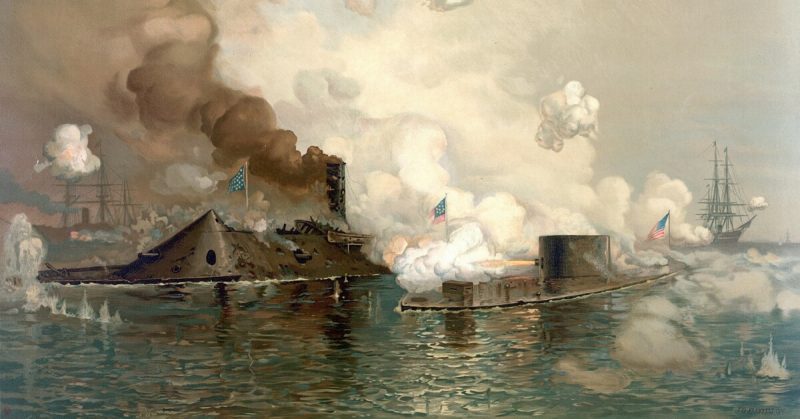The Battle of Hampton Roads was an American Civil War battle fought at the meeting point of three rivers very close to Chesapeake Bay. A showdown between the ironclad ships, the USS Monitor and the CSS Virginia, it was the first of its kind. Because of this, the battle is of important significance as it brought about a new type of naval warfare. Here are ten things you should know about the Battle of Hampton Roads.
1. Ironclad Warfare
This battle was the first meeting of ironclad warships. An ironclad warship sits low and features iron plating around it, making it much more difficult to sink than a traditional wooden ship. These types of ships are also steam-propelled and were used heavily in the American Civil War.
2. The Players
The battle began for the CSS Virginia when it sailed into Hampton Roads on March 8th, 1862. At this time, there were just wooden Navy warships in the area, and the CSS Virginia held nothing back. Nightfall forced it to retreat, but the following day the CSS Virginia resumed its attack. At one point in the morning, the Monitor arrived to fight alongside the wooden ships. It would be the CSS Virginia who would fire the first shot, which actually missed the Monitor and hit the ship it was trying to aid.
3. Cause of the battle
The South looked to go on the offensive as the Union had set up blockades that were blocking some of Virginia’s biggest cities from being able to receive international ships. This blockade was an issue for the South as these ships were bringing in vital international trade.
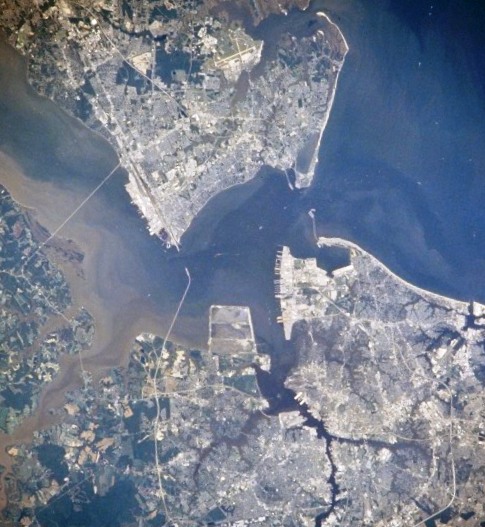
Two specific cities that were cut off by the Union were Richmond and Norfolk. The Union used Hampton Roads, the water between Newport News and Norfolk, to utilize their blockade. This stopped access no only to the ports of Newport News and Norfolk, but also Richmond as you had to go through Hampton Roads to reach Richmond.
4. Draw
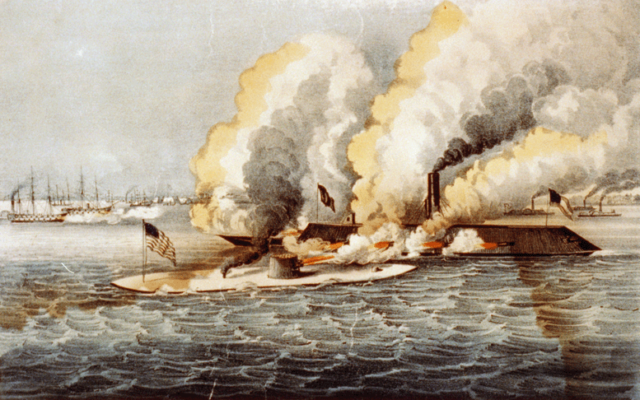
The CSS Virginia devastated the wooden ships initially defending Hampton Roads, but as far as the actual battle with the Monitor, neither ship did much in the way of damage. Neither ship sank, or suffered a serious blow even though there were many shots and shells fired upon each other. In a way, the ironclad design did what it was supposed to do, protect the ship from damage.
Both sides claimed victory, but modern historians disagree. The Confederates caused more damage than the Union, but the blockade was not affected by the battle. Because of this balance between each sides’ claims, the battle is generally regarded as a draw.
5. Effect on Navies Around The World
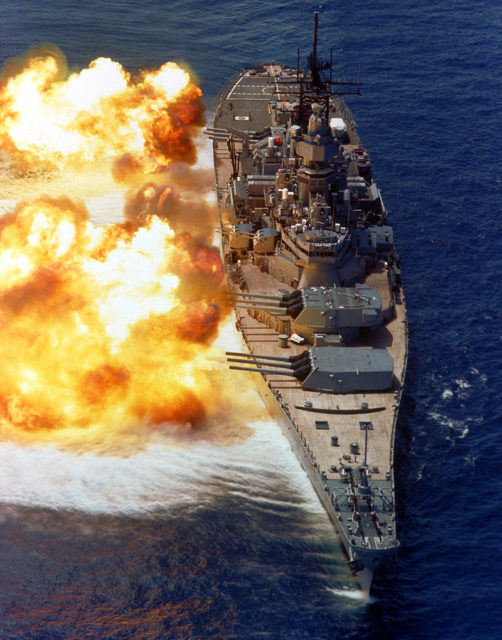
Many of the world’s navies became interested in the battle following the events. The Monitor would go on to developing into its own class of ship. In the months after the battle, the United States ordered 10 more of the ships be built. Russia got in on the mix, fearing that the Civil War would end up in Alaska, and thus they too built several Monitor ships. Lastly, the British and the French also attempted to convert wooden ships to an armored style vessel. The success of this did not match that of an ironclad warship.
Because this battle put these ships on the world stage, it changed naval warfare altogether. You can see aspects of the ironclads in modern battleships. It’s a long evolution, but the ironclad and the battleship share a bloodline.
6. Not the First
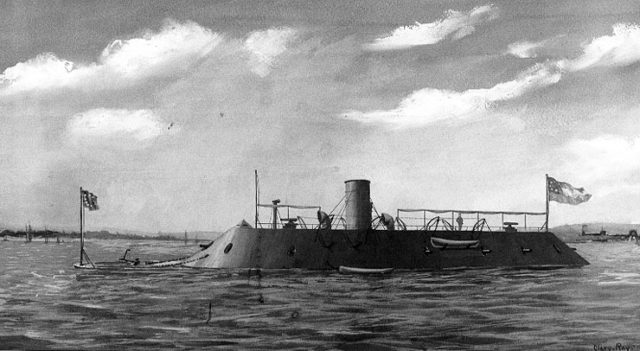
These ironclad ships were not the first of their kind. The French had launched, and ironclad ship in the late 1850s and the Royal Navy had launched one in 1861. They weren’t even the first American ironclad ships, as several gunboat ironclads have been deployed months before these. They were, however, the first ironclads to ever meet for battle.
7. Pearl Harbor
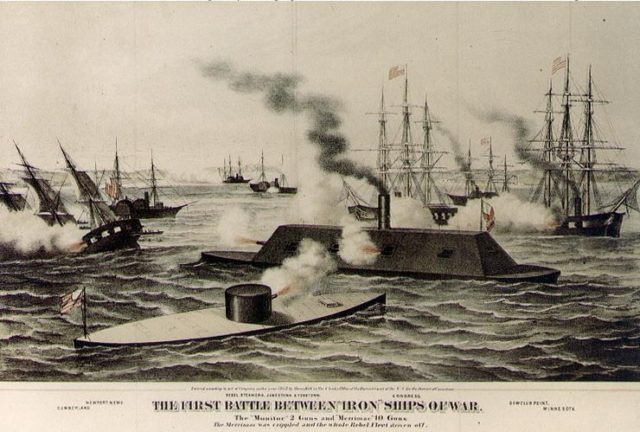
The attack that took place on March 8th, by the CSS Virginia on the United States Navy wooden ships at Hampton Roads was the worst attack on the United States Navy until Pearl Harbor. In total, the United States Navy lost 240 men that day, 261 total over the two-day period, with another 108 wounded. The CSS Virginia lost just two men, while 12 were wounded.
8. Most Dangerous Weapon?
The CSS Virginia carried many weapons and shells, but its most dangerous weapon was its 1,500-pound ram that was fixed to the front of the ship. This ram took out several ships on March 8th, and they had planned to attack the USS Monitor with it. But there was just one problem; that the ram broke off and sank to the ocean floor during the battle. Because of this, the CSS Virginia was largely unable to attack the USS Monitor. In fact, after several hours of firing shells at the Monitor, the men on the Virginia stopped altogether as it was doing no damage. They even tried shooting into the Monitor‘s gun ports, but this was largely ineffective.
9. CSS Virginia was Built From A Union Ship
The CSS Virginia was actually built from the wreckage of another ship, the USS Merrimack, which was intentionally sunk in 1861 by the United States Navy. The Confederacy was in desperate need of ships, so they raised the USS Merrimack and pieced together the CSS Virginia. The plan was to build an ironclad, but they needed 800 tons of iron. To come up with this much iron, the Confederacy began scrapping old items to build the ship.
The USS Monitor doesn’t have a similar story at all. It was built after the Union Navy learned that the Confederates had captured the USS Merrimack and were converting it to an ironclad ship. The United States Navy decided that it would need a counter to this new and deadly weapon. It was built in 1861 and launched just a month before the Battle of Hampton roads.
10. USS Monitor Weaponry
The USS Monitor was quickly sent to Hampton Roads following its launch. Because of this, it missed a lot of the testing that would have normally been done on its weapon systems. The Monitor used 11-inch guns, which were capable of shooting upward of 25-30-pound gunpowder charges. However, the Union didn’t learn this until after the Battle of Hampton Roads.
For the battle, the Monitor‘s crew chose to use 15-pound gunpowder charges. These did little in the way of damage. When the Union later realized the ship’s guns were capable of shooting the 25-30-pound gunpowder charges, the consensus was that they would have won the battle and sank the CSS Virginia had they used.
